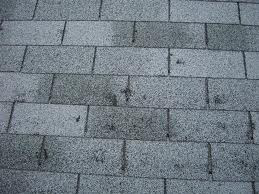 The critical first step is to determine the extent of your loss. In many cases you
may not know what to look for as some of the most costly repairs often result from
damage that is not apparent. Our trained specialists can assist with determining
the extent of your loss. Most insurance companies require a certain amount of damage
to qualify for replacement or repair. Knowing what these requirements are, and understanding
the way the insurance company works set us apart from most other companies.
The critical first step is to determine the extent of your loss. In many cases you
may not know what to look for as some of the most costly repairs often result from
damage that is not apparent. Our trained specialists can assist with determining
the extent of your loss. Most insurance companies require a certain amount of damage
to qualify for replacement or repair. Knowing what these requirements are, and understanding
the way the insurance company works set us apart from most other companies.
In most cases your roof is the most costly of the repairs to your home after a Hail
storm.
Damage cannot be seen from the ground!
Just because you don’t have a leak doesn’t mean you don’t have damage. This is a
major misconception. The insurance owes for the roofing not because it has put holes
through the shingle but because you have a shingle or product that has been damaged
and instead of having a shingle with a 25/30 year life it now has been reduced considerably.
Sometimes the roof will fail in only 2 to 3 years.
The first step to determine the loss is to document all damages.
At H & R we do a complete evaluation of the property including taking photos, and
video of the roof, siding, gutter, all elevations, and personal property that has
been damaged from the storm. Most insurance and engineering companies allow a test
square on the roof and this determines the amount of damage and if the roof is repairable
or if replacement is warranted. The test square is a 10ftx10ft area and then the
number of Hail hits is then marked in the test area. The general rule is if there
is more than 6-8 hits in the test areas then the slope is figured for replacement.
Many factors play into how much damage a roof has:
- Age of the roof
- Direction the storm came from and the way the roof slope faces
- Trees and other buildings that may block or slow down the hail prior to impact
- How Steep the Roof is
- Type of shingle and thickness of the shingle
- Density and size of the hail
- Wind speed also plays a factor in the damaged caused as well in general it take
hail that is 1.75 to 2” to cause any significant damage but if very high wind is
associated with the hail then damage can occur.
Return to Hail and Storm Damage Restoration Overview